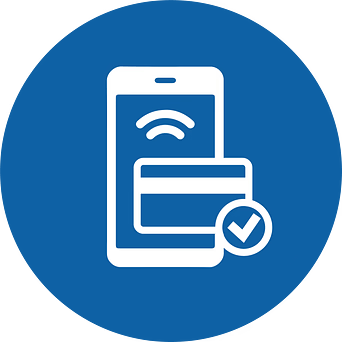Picture this: you’re in a pretty familiar situation, out at lunch with a fellow employee. You’re standing in line, ready to get a sandwich or slice of pizza, when you look down and realize you forgot your wallet. There’s no time to run back to the office, and you’re starving. Luckily, your friend offers to spot you. Crisis averted, you get your lunch. “Thanks so much bud, I’ll grab some cash for you when we get back to the office.”
“No, don’t worry about it! You can just Venmo me.”
“umm…excuse me? Do what?”
“You can send me money via the app. No cash handling required!”
Has this happened to you yet? Mobile apps such as Venmo, PayPal, Google Wallet and others are revolutionizing the way we handle our money with mobile payments. According to some of my younger employees, apps like these are extremely popular. Millennials across the country aren’t taking the time to stop by an ATM and pull out cash anymore; funds are accessible anytime, on their phone. They’re even more willing to lend money to coworkers or friends, because if a friend forgets to pay them back, they can just “request funds” through the app.
Mobile Money is Changing the Game
Apps like Venmo are just the tip of the iceberg of mobile money handling. Online, mobile payments are becoming more and more essential for businesses – especially since 77% of US adults own a smartphone, and in 2016 alone, US consumers bought $47.6 billion of physical goods via remote mobile payments. Digital wallets such as Apple pay are coming pre-installed on smartphones, giving consumers even more convenient access to their money, whether that be for paying someone back for lunch, or purchasing goods from a website. In the situation above, if you had had your debit card saved to Apple Pay on your smartphone, you could have simply used that in place of your physical card at the register. In the US, mobile wallets are even expected to surpass the use of both credit and debit cards by 2020.
Using Mobile Payments for Business
Most businesses nowadays have mobile apps already, or at the very least, have their websites optimized for smartphone browsers. If you’re thinking

Funds and credit cards are available at the touch of your smart phone.
to yourself, “hey… I don’t have either of those things”, it may be time to jump on the bandwagon.
There are approximately 5 billion mobile phone users in the world, and each of them are consistently using their phones to do more every day—in the US, that’s 9 out of 10 consumers that you could be reaching with your business. Most won’t stick around to struggle with a non-mobile optimized website, and that’s a pretty huge number of customers to be missing out on.
Add mobile payments, and you’ve solved a big piece of the consumer experience puzzle. The increase in popularity of in-app payments, digital wallets, and mobile payments in general is an apt reflection of just how integral the consumer experience has become to doing business. In this country alone, thirty-nine percent of consumers say they would use mobile payments more frequently, if more stores and apps accommodated it. Mobile payments are becoming an indispensable part of the consumer lifecycle, and if you’re not making every aspect of your customer’s interaction with your business (including the payment portion) as convenient and seamless as possible, you’re missing out on a huge opportunity.
Moving Forward
Security, of course, is a big question that most business owners will bring up when discussing mobile payments. As digital wallet and payment options become more popular, so do the opportunities for theft and misuse. Whether or not mobile payments are secure or safe ranks high on the list of obstacles to mobile payment use, with 70% of the US population noting it as a concern. As the technology develops, we can only hope to see improvements in security features and safety protocols for mobile payments.
This encounter got me thinking. Wouldn’t it be cool if we could empower customers to pay for services from the body shop or at the dealership right from their phones? Sometimes, sentences starting with “wouldn’t it be cool…” mark the beginning of a great idea, and even a business. That’s how our Merchant Services division, UpdatePromisePay, got its start.
How have you seen the mobile trend change your business, your community, and your daily life?
Status Updates Can Improve Customer Satisfaction Rating By 10%
Automated status updates ensure customers are kept informed during the service lifecycle.
Reduce inbound and outbound calling between service writers and customers with real-time status updates via text messaging and email.
Available analytics in real-time provide realistic target date and time on all delivery promises. Customers are able to schedule and plan their day more efficiently.
Texting is 10 times quicker than phone calls – by the time you make one call to a single customer, texting would have enable an effortless communication with 10 customers.
The essential truth about retaining customers is the way you are able to keep them engaged. As the old saying goes – the best way to grow your customers is not to lose them.

 Harmony AI
Harmony AI Intelligent Appointments
Intelligent Appointments Tablet Vehicle Check-In
Tablet Vehicle Check-In Digital MPI
Digital MPI UpdatePromise App
UpdatePromise App AI-Driven Status Updates
AI-Driven Status Updates Dashboard Analytics
Dashboard Analytics AutoRepair-Review.com
AutoRepair-Review.com Full Merchant Services
Full Merchant Services Clover & Payment Devices
Clover & Payment Devices Sunbit
Sunbit SmartPath Service
SmartPath Service MONOGRAM Service
MONOGRAM Service Honda
Honda Acura
Acura Genesis
Genesis Audi
Audi Service Lounge Podcast
Service Lounge Podcast All Features
All Features

